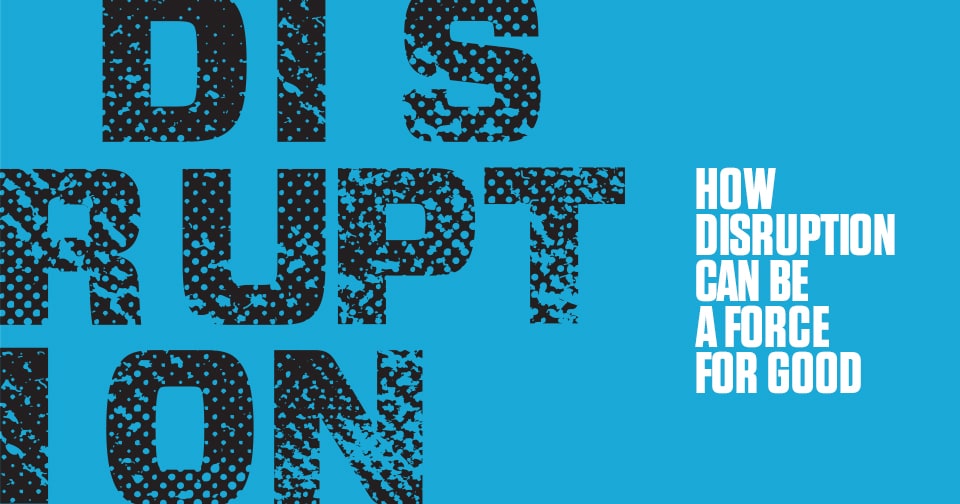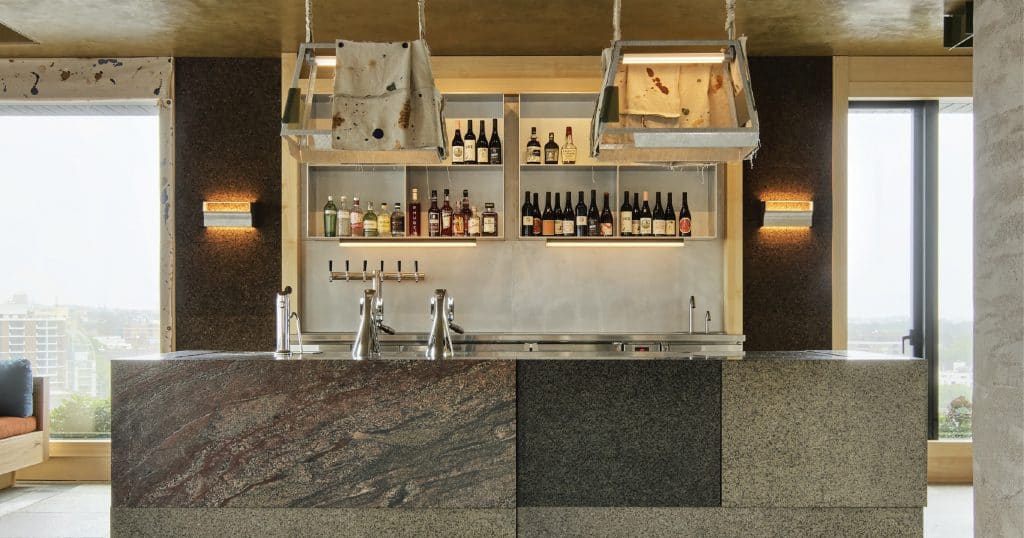
All industries can look at moments of disruption that changed its path. For music it was the iPod, in transport Uber, while Amazon transformed retail for good. In the following pages you’ll find a – less than comprehensive – listing of disruptive elements and moments in the foodservice sector that changed the face of the industry. From automation to zero waste, we have tried to include some of the factors that have disrupted the foodservice sector over the years, changing the business landscape in the process.
Without disruption, foodservice and hospitality would stagnate and this, after all is a sector in constant development. Plainly, those that innovate and introduce new ways of working, shopping and operating – those leading the way at the head of the pack – will be the ones reaping the rewards when success comes.
As the computer scientist Alan Kay said, “The best way to predict the future is to invent it.”
A – Artificial intelligence
From installing AI-controlled self- ordering kiosks to speed up customer flow and ordering and payment processes, to implementing virtual assistants for customer enquiries, artificial intelligence has gained traction in a sector where customers want convenience and speed.
Rudy Miick FCSI, founder and president of The Miick Companies, says AI is advancing at speed. “This technology has had the biggest impact in kitchen production and repetitive tasks,” he says. “Early adopters are on their way to using AI from front to back in the world of hospitality,” he explains. “Our industry has always been slow to adapt, but the pandemic and great resignation are making the case to bring AI in as fast as cash flow and capital raise makes the case.”
B – Big data
Collection of customer data has become vital in the foodservice sector, from recording
contact details on booking to tracking preferences. The important part in
big data is how this information is analyzed and used. Learning customer preferences through feedback forms helps to refine menus, tracking orders so there is always something of interest for them on the menu. Analyzing data can help to streamline the supply chain, so often guilty of inefficiencies.
C – Combi oven
Among the biggest cooking innovations and a genuinely gamechanging technology
to be used in foodservice, the combi oven was first introduced by Rational 40 years ago. Now used all over the world, combi- ovens allow steaming, with moist heat, and convection, dry heat. It also has a combi-steaming method combining the two in one appliances. Few chefs would like to be without this multifunctional piece of kit.
D – Delivery
A lot has happened since the World Wide Waiter delivery service launched in
San Francisco in 1995. Aggregating over 60 restaurants in the city, the platform offered food delivery to homes and offices. In the almost three decades since, the segment has become big business with consumers embracing platforms including Deliveroo in Europe; DoorDash and Grubhub in the US and GoJek in Asia
In early iterations diners would order Chinese or pizza from home, and not always of the finest culinary standards. Today – partly due to the pandemic – operators from QSR to fine dining, know that delivery has to be part of the mix.
E – Electrification
In the quest for net zero carbon, the move towards electrification of commercial
kitchens is seen as fundamental. One reason is that electric-powered cooking equipment has the potential to be fully powered by renewable sources.
All-electric cooking means lower ventilation rates, as well as a reduced risk of fire and poor air quality in the kitchen. Berkeley, California, already banned the implementation of natural gas in new builds and more are sure to follow with many governments having established dates for net zero. According to Nahum Goldberg FCSI of NG Associates in
the US, high energy costs may force more operators to electric cooking. “Smart management of electric kitchen equipment can help to increase energy efficiency,” he says.
F – Farmscrapers
We already have buildings covered in plants and leaves, bringing nature to urban settings. Farmscrapers take it to the next level, combining office buildings with agriculture, using hydroponic technology. China’s Jian Mu Tower will be the first farmscraper in the world, expected to produce 270,000 kg of crops every year – enough to feed 40,000 people. In heavily urbanized cities, far from fields, farmscrapers could play a crucial part in how we source our vegetables.
G – Geofencing
Smart operators are increasingly embracing geofencing, a location- based service where an app or other software program uses radio frequency identification (RFID), Wi-Fi, GPS, or data from a cellular device to trigger a targeted marketing action – a text, email, or push notification – when a device or tag moves through a “geofence” or virtual geographic boundary. Continued growth will surely elevate this to a more widepread marketing strategy in the years to come.
H – Hydroponics
Restaurants and foodservice operations in urban settings are reliant on shipping fresh produce, often very long distances due to the lack of land to be self-sufficient. Hydroponics – a system that delivers nutrients directly to the roots of plants, using pumps and gravity and eliminating soil – have gained popularity in the foodservice sector.
Said to use 95% less water than conventional farming systems, it has less impact on soil and urban farms being close to grocers cuts transportation costs. Often placed underground, it is space efficient; brings year-round availability and a longer shelf life.
I – Instagram
The photo sharing app, launched in 2010, is crucial in the restaurant marketing toolbox. Allowing chefs and restaurateurs to communicate directly with customers has been a gamechanger, enabling users to control the content flow, push messaging and build
a narrative to what is sometimes vast captive audiences. Starbucks has almost 18 million followers while British chef Gordon Ramsay has amassed an audience of nearly 14 million.
Instagram has empowered customers to share experiences on the platform, essentially making every diner a critic.
J – Just Walk out
The technology, first launched by Amazon in its Amazon Go stores, allowing for genuinely
frictionless shopping: customers walk in, take what they need and automatically pay when they walk out. It is set to advance across the foodservice sector and this year has seen it introduced at Major League baseball stadium for the first time, as spectators at Houston Astros are able to purchase food and drink with the technology. Relying on AI, sensors and computer vision, it allows customers to shop without checking out, avoiding long checkout lines.
According to Kristin Sedej FCSI, owner of S20 Consultants, the technology has the potential to be a game changer. “Absolutely, assuming that you are able to afford the upfront and ongoing costs associated,” she says. “There are considerable infrastructure and equipment considerations, but once implemented, it increases the throughput and reduces labor. It’s also really cool.”
K – Kitchen space
Top among the challenges faced by restaurateurs and especially those working in the back of house. The ever shrinking kitchen space has been an evolving issue in the sector for many years now, due to owners looking to maximize earning potential by extending the dining room to fit more customers. Rents are going up, the price of ingredients is spiking and most operators want to pay their staff a fair wage. In the quest to cover all these costs, many have cut kitchen space to allow for more covers front of house. It has posed a challenge to chefs, consultants and manufacturers who have had to think smartly about multi- functional equipment that can be stacked or fit under counter. As usual, challenges have led to innovation in the kitchen.
L – Life cycle traceability
Tracing and tracking data allows for smarter process management and, crucially, helps to improve future innovation. Using blockchain and machine learning technologies to trace commercial products throughout their life cycle and build a full-service databank of how the product is managed, the Loopcycle platform has a stated mission to trace a million products by 2025. Working with manufacturers and operators of commercial kitchen equipment, it provides product intelligence, enabling efficient product and warranty management by the operator while driving the circular economy.
Tina Nielsen




